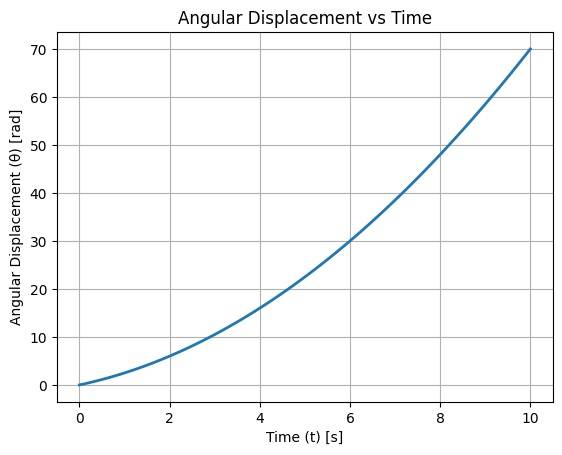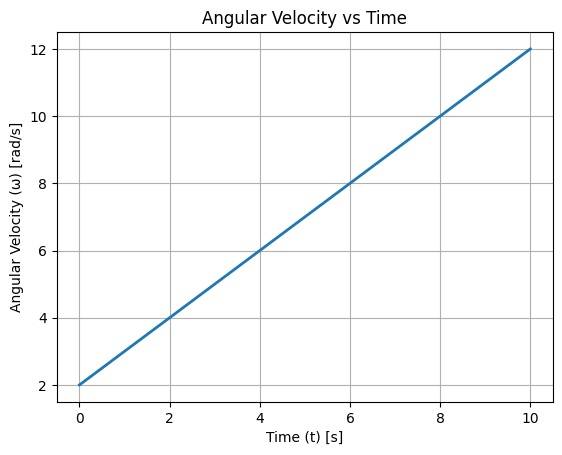
Rotational motion is a topic from the chapter "Systems of Particles and Rotational Motion" which is used to deal with objects which move around an axis. An object in motion can be divided into two types: one that moves from one point to another (maybe a straight line or a curve), or the one which rotates around a fixed point. The following article specifically aims at studying the dynamics of rotatory movement of an object in detail. It gives an overview of some core fundamental quantities such as torque, moment of inertia, angular momentum, work and power in rotational motion, etc. which are necessary for competitive exams like JEE MAINS.
Also Read:
| Class 11 Physics Notes | Class 12 Physics Notes |
| System of Particles and Rotational Motion NCERT Solutions | System of Particles and Rotational Motion NCERT Exemplar |
- What is Rotational Dynamics?
- Key Terms Related to Rotational Dynamics
- Torque (τ)
- Moment of Inertia (I)
- Angular Displacement (θ)
- Angular Velocity (ω)
- Angular Acceleration (α)
- Angular Momentum (L)
- Newton’s Second Law of Rotation
- What is Rolling Motion About?
- Difference between Linear Motion and Rotational Motion
- Applications of Rotational Motion
- NCERT Revision Notes for Class 11
- NCERT Solutions for Class 11
What is Rotational Dynamics?
Rotational Dynamics is a concept which studies how external forces cause a body to move around its fixed point of axis. The key equation governing this concept is the Newton's second law for linear motion which can be represented as:
Where,
= net external torque about the axis,
= moment of inertia of the body about the axis
= angular acceleration.
Some Common Examples of Rotational motion include:
- Wheel of a Car
- Beyblade
- Ceiling Fan
- Earth's Rotation
Key Terms Related to Rotational Dynamics
To clearly understand the topic of rotational motion, students need to be familiar with sme important terms and there relation with linear motion. Some of these are as follows:
- Torque (τ)
- Moment of Inertia (I)
- Angular Displacement (θ)
- Angular Velocity (ω)
- Angular Acceleration (α)
- Angular Momentum (L)
- Newton’s Second Law of Rotation
Now let's have a detailed look at each of these terms frequently used in this chapter which will strengthen your basic understanding of rotational motion.
Torque (τ)
Torque is considered as the rotational equivalent of force and measures the force applied on the object rotating on the axis. it is caused by external forces acting at a distance from the axis, and the moment of inertia quantifies the body's resistance to angular acceleration.
SI unit of torque is .
The torque about a point can be defined as:
= rFsinθ
where,
= position vector from the axis to the point of application of force .
*Note: θ here is the angle of the force applied. For a fixed axis, only the component of torque along the axis contributes to rotational motion.
Moment of Inertia (I)
The moment of inertia is the rotational equivalent of mass in linear motion. The exact use of moment of inertia is to calculate the resistance shown by the object while changing its motion. Moment of inertia is referred to the ability of the body to oppose the change in it's rotational motion.
For a system of particles, moment of inertia will be represented as:
Where,
I = Moment of Inertia
Mi = Mass of the body
Ri = Distance from the axis
For continuous bodies, it can be presented as: .
Angular Displacement (θ)
Angular Displacement is referred to the angle at which the object rotates around the fixed point of axis. It is a vector quantity and is measured in radians.The formula for angular displacement ia categorized into two types:
1. Arc/Curve length
This is used to calculate the distance travelled along a circular path. Mathematical representation can be given by:
θ = s/r
Where,
θ = angle of displacement
s = length of the curve/arc
r = radius
2. Object's Position
This used to measure the position of the object from initial position to the final position. Mathematical representation can be given by:
θ = θf - θi
Where,
θ = angle of displacement
θi = angle of initial position
θf = angle of final position
Angular Velocity (ω)
Angular Velocity is the rate of change of angular displacement of the object. It can also be defined as the measure of the speed at which a particular object is rotating.
It is a vector quantity and can be represented by the equation:
ω = dθ/dt
Where,
ω = angular velocity
dθ/dt = rate of change
SI unit of angular velocity is radian per seconds.
Angular Acceleration (α)
Angular Acceleration is referred to the rate of change in the acceleration/angular velocity of the object. Just as linear acceleration describes how velocity of the object changes from one point to another, angular acceleration will tell us how fast the object moves around its fixed point of axis. It can be denoted through the formula:
α = dω/dt
Where,
α = angular acceleration
ω = angular velocity
t = time
The SI Unit for angular acceleration is .
Angular Momentum (L)
Newton’s Second Law of Rotation
What is Rolling Motion About?
Difference between Linear Motion and Rotational Motion
Applications of Rotational Motion
NCERT Revision Notes for Class 11
NCERT Solutions for Class 11
Commonly asked questions
What is the exact difference between force and torque?
In simple words, a push or pull applied on a body is known as a force. Force is a concept used in terms of linear motion. On the other hand, the force which causes a body to spin around an axis instead of moving from one point to aother is called torque. Torque is a theory which comes into account while studying rotational motion and is considered as the rotational analogue of force.
How does mass of a body affect it's rotational motion?
Even if the torque is same, the rotation of a body can be slow or fast depending on the distribution of mass along the surface area. If the mass of a body is more on the axis area, it's speed of rotation will be faster as compared to the body whose mass is accumulated away from the axis due to which the body will resist the angular acceleration.
Can the value of angular velocity be negative?
Yes. Angular Velocity is a vector quantity i.e. it has directions. The direction of rotation can influence the sign of angular velocity's value. If the movement of the object is anticlockwise, the sign will be positive. Similarly, if the movement of the object is clockwise, the sign will be negative.
Physics System of Particles and Rotational Motion Exam
Student Forum
Other Topics under this Chapter
- Overview
- Moment of Inertia
- Centre of Mass
- Motion of Centre of Mass
- Vector Product of Two Vectors
- Torque and Angular Momentum
- Equilibrium of a Rigid Body
- Linear Momentum of a System of Particles
- Angular Velocity and Relation with Linear Velocity
- Kinematics of Rotational Motion About a Fixed Axis
- Dynamics of Rotational Motion About a Fixed Axis
- Angular Momentum of Rotation About a Fixed Axis
- Streamline Flow
Other Class 11th Physics Chapters
- Physics Mechanical Properties of Solids
- NCERT Class 11 Physics
- NCERT Class 11 Notes
- NCERT Notes
- Physics Motion in Plane
- Physics Mechanical Properties of Fluids
- Physics Motion in Straight Line
- Physics System of Particles and Rotational Motion
- Physics Oscillations
- Physics Waves
- Physics Thermal Properties of Matter
- Physics Motion
- Physics Gravitation
- Physics Thermodynamics
- Physics Work, Energy and Power
- Physics Units and Measurement
- Physics Laws of Motion









